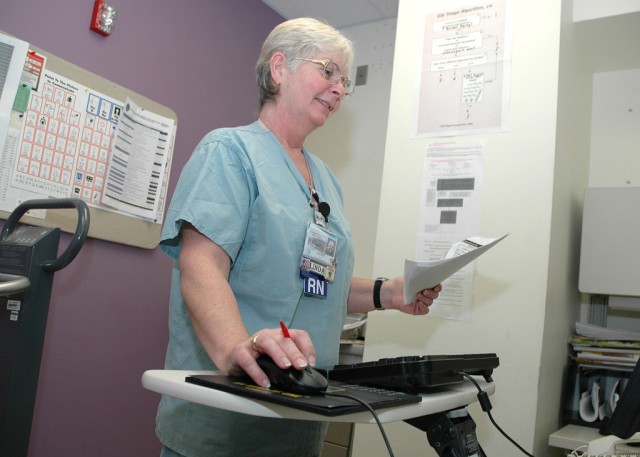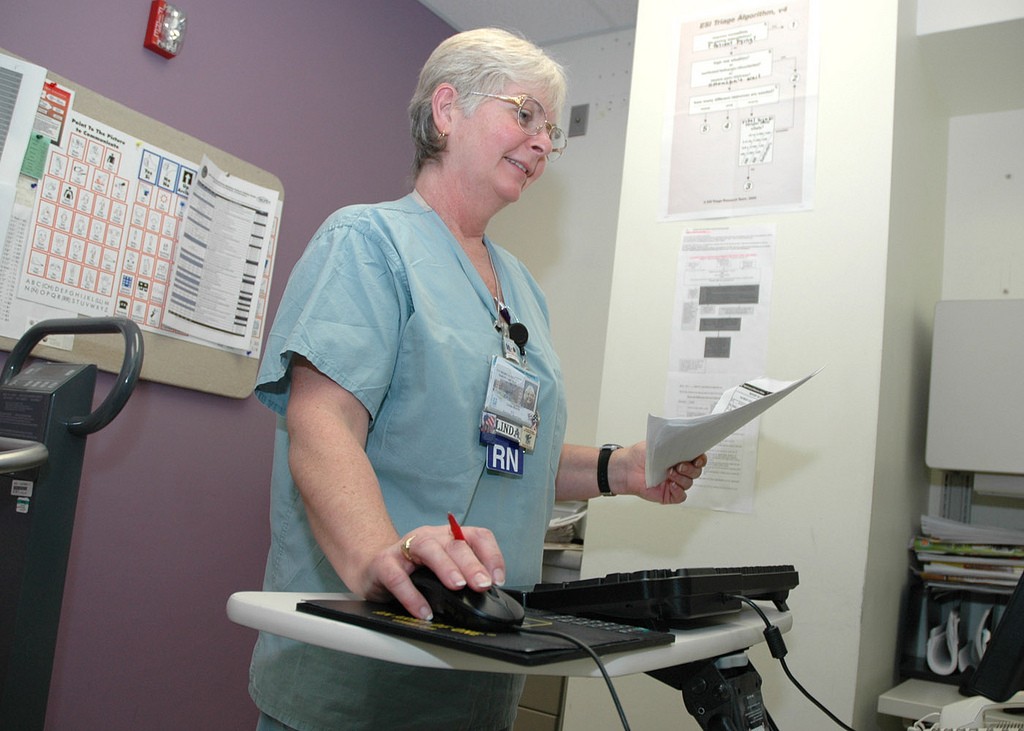
The use of improvised explosive devices (IEDs) is the weapon of choice by enemy forces in Southwest Asia. In December 2009, an IED detonation in Afghanistan left an Army major with injuries to the face and multiple fractures throughout his body.
The soldier, who chose to remain anonymous, was medically evacuated to Camp Lacy at Bagram Air Field, where he underwent surgical procedures for his injuries. Clinicians with the 455th Expeditionary Medical Group and others digitally documented his care in computer systems fielded by the U.S. Army's <a href="http://www.mc4.army.mil">Medical Communications for Combat Casualty Care (MC4)</a> program.
After a short stay at Camp Lacy, the patient received follow-up care at Landstuhl Regional Medical Center in Germany. On Christmas Eve, he boarded a plane bound for the U.S. for further recovery and to reunite with his family.
As he crossed the Atlantic Ocean, the staff at the North Chicago VA Medical Center in Illinois prepared for his arrival. Hours before the soldier arrived at the stateside treatment facility, physicians had reviewed a full account of his medical history.
"As soon as we got the call, we were able to generate a medical record for him in VistA Web, where his physician was also able to view all of his remote medical records from AHLTA," said Bonnie Munkacsy, North Chicago VA Medical Center transfer coordinator. "This made all the difference with the speed and coordination of his care."
Dr. Frank Maldonado, associate chief of staff for clinical affairs at the North Chicago VA Medical Center, said, "Our VA and DoD electronic medical records systems work extraordinarily well in situations like this. By reviewing the medical record before the patient arrived we were able to determine his allergies, medications, baseline labs, X-rays performed and review of progress notes including operative reports. This saved the patient lots of unnecessary tests and saved time for staff in determining a plan of care."
The information exchange was made possible via a data interface between the DoD's AHLTA and the VA's VistA systems-the Bi-directional Health Information Exchange (BHIE).
Maldonado credits the EMR systems in place to making the time-critical transition of service members possible. "It's safe to say that that without the EMRs, we would not have been able to prepare for the major's arrival in the manner in which we did."
For more information on the impact of battlefield medical records, visit <a href="http://www.mc4.army.mil">www.mc4.army.mil</a>.

Social Sharing